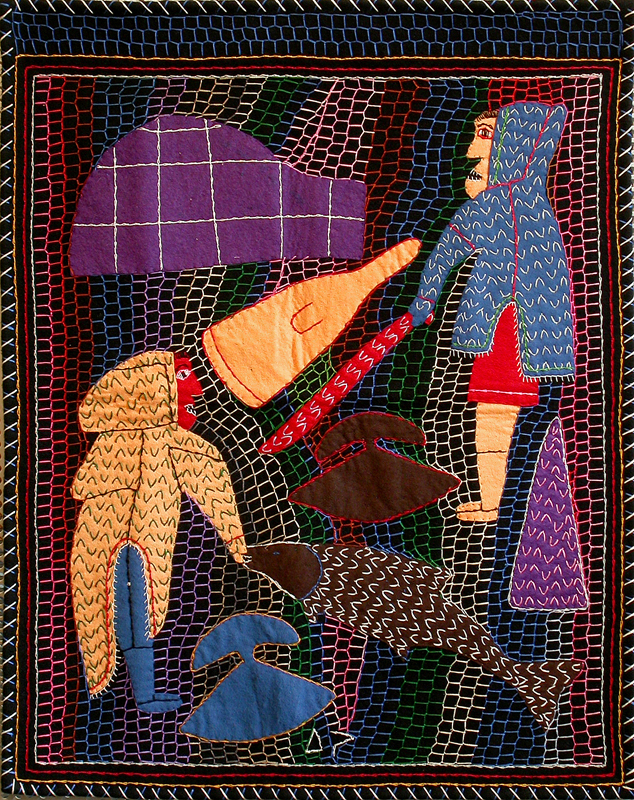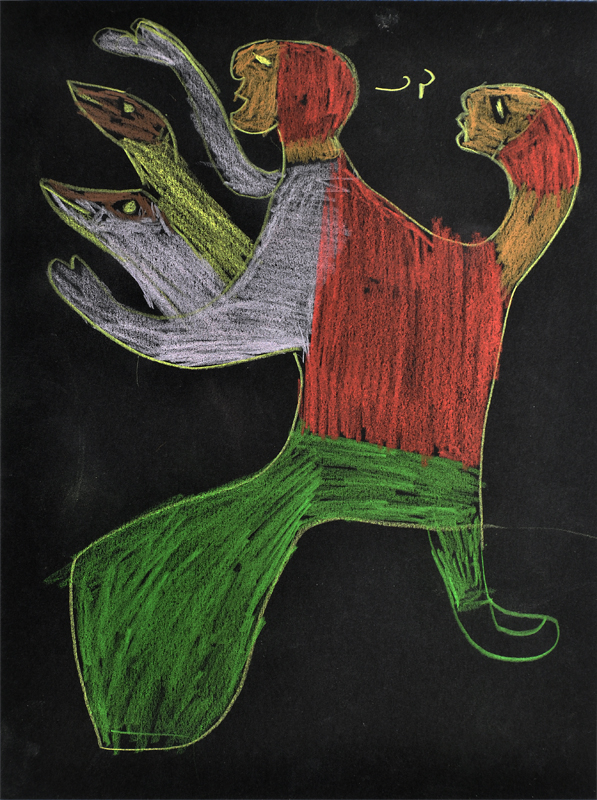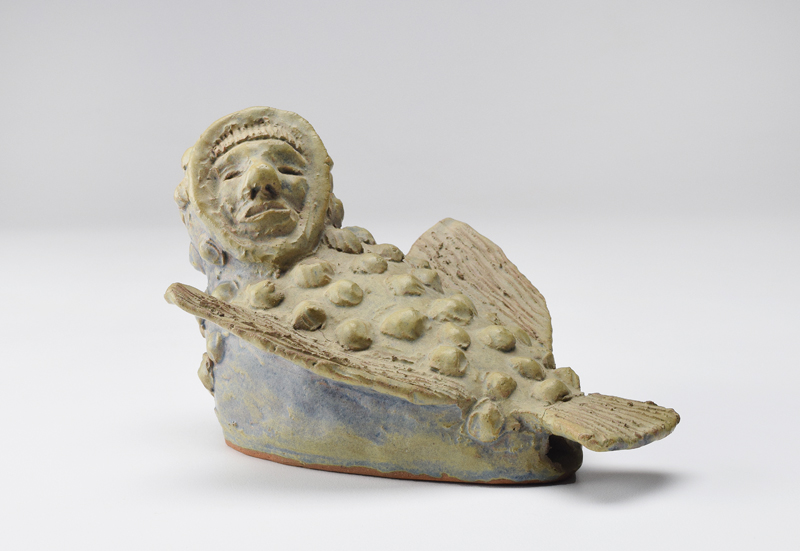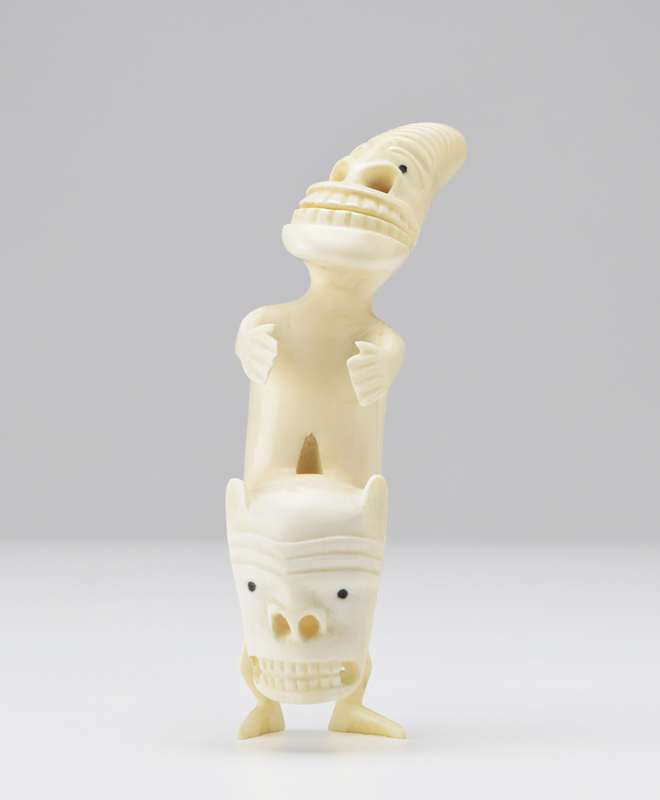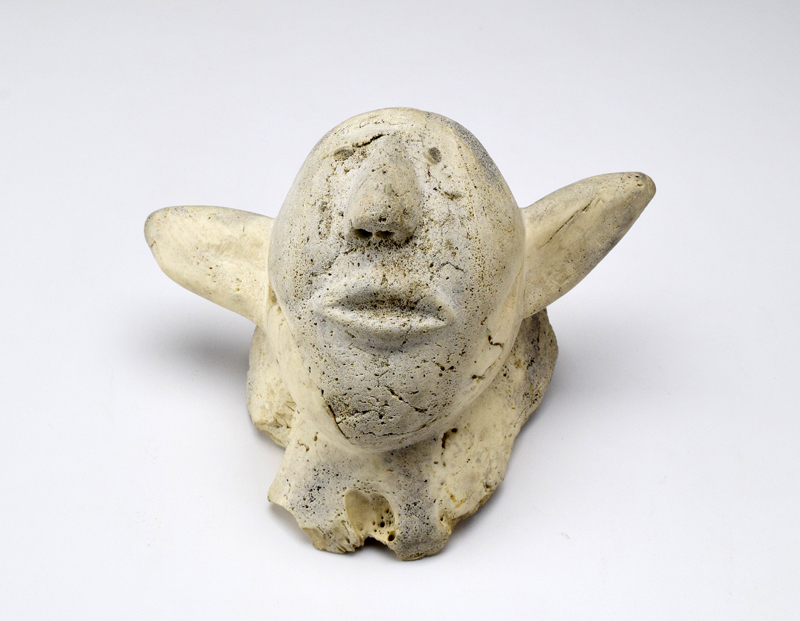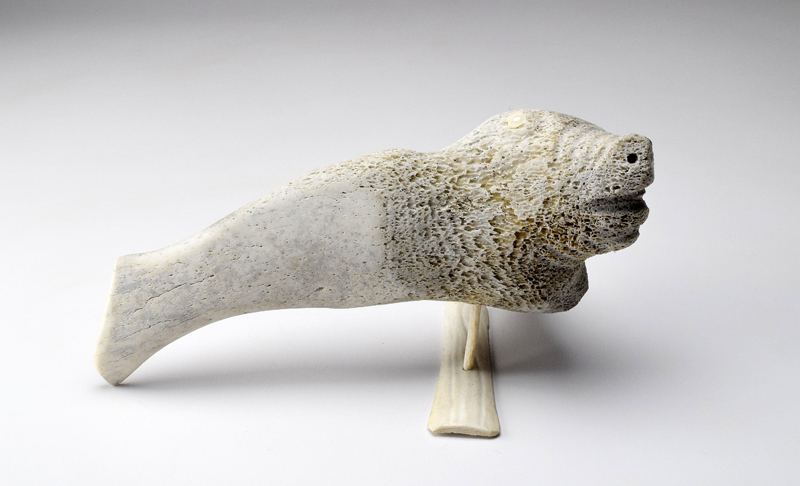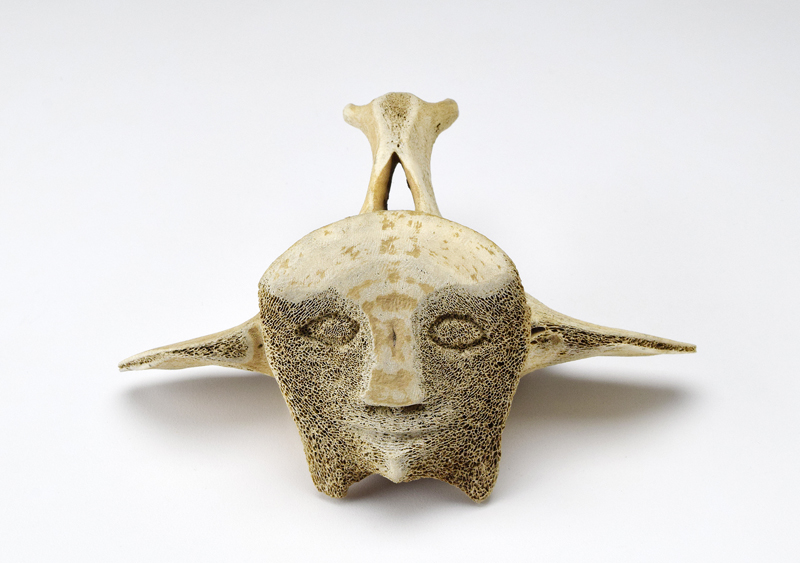Profile: Shamans and Spirits

Our October profile features images of Inuit shamans and the spirits who guide and assist them. Shamanism is central to the ancient Inuit belief system. These specially gifted individuals serve their communities as healers whose ability to communicate directly with the animal and human-like spirits who control much of human destiny can alleviate suffering. The profile includes sculptures, drawings and a textile work by 13 different Inuit artists.
Judas Ullulaq’s stone sculpture depicting a shaman with a spirit emerging over his or her shoulder expresses the close relationship between healers and their otherworldly helpers. This work reflects Ullulaq’s trademark dynamism and humorous vision: the shaman seems both comically surprised and frightened by the sudden appearance of the strange being next to his head. More lyrical in mood is Luke Anowtalik’s graceful caribou antler assemblage representing a shaman surrounded by various human and animal spirits. Anowtalik’s shaman is pictured performing a dramatic transformation wherein his raised hands are shown growing into the forms of two large birds. Although smaller in scale, the unattributed sculpture by an artist from Qamani’tuaq (Baker Lake) of a shaman with four legs and a pair of walrus tusks protruding from the corners of his mouth expresses with rare realism the intensity and power that attends such transformational engagements with the spirit world.
In contrast to the monochromatic character of the sculptures, the two-dimensional works in the profile are energized by vivid colour. Irene Avaalaaqiaq’s symmetrical drawing of a shaman with bird beings emerging from the figure’s arms and sides pictured against a spiritualized landscape features repeating stripes and chevrons of bright contrasting colours, giving the image a hypnotic, almost psychedelic presence. Lucy Tasseor’s smaller drawing on black paper of a shaman shown in profile is a similar hybrid made up of multiple human and bird identities. Naomi Ityi’s wallhanging featuring people engaged in various everyday tasks may not be a literal representation of shamanism, yet its floating forms, tactile surfaces and powerful contrasts convey strong otherworldly connotations.
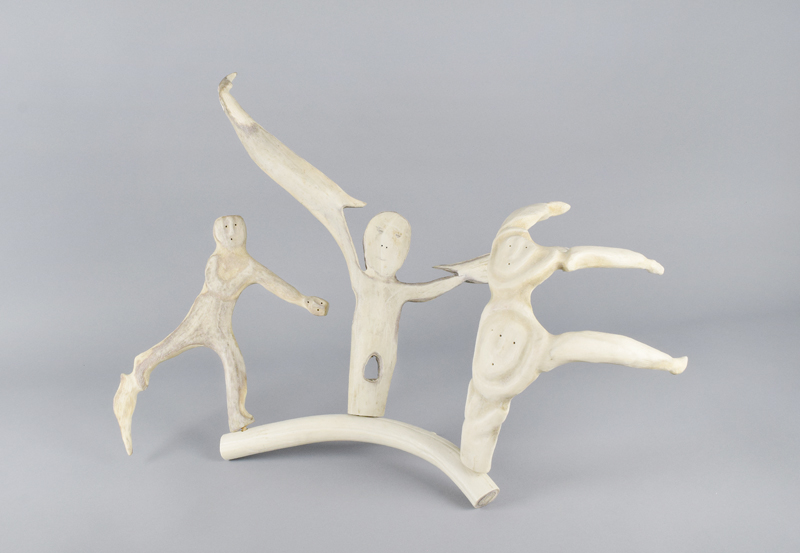
Luke Anowtalik
19. Untitled (humans transforming into birds), circa 1988, caribou antler, 15 x 22 x 17 in.


